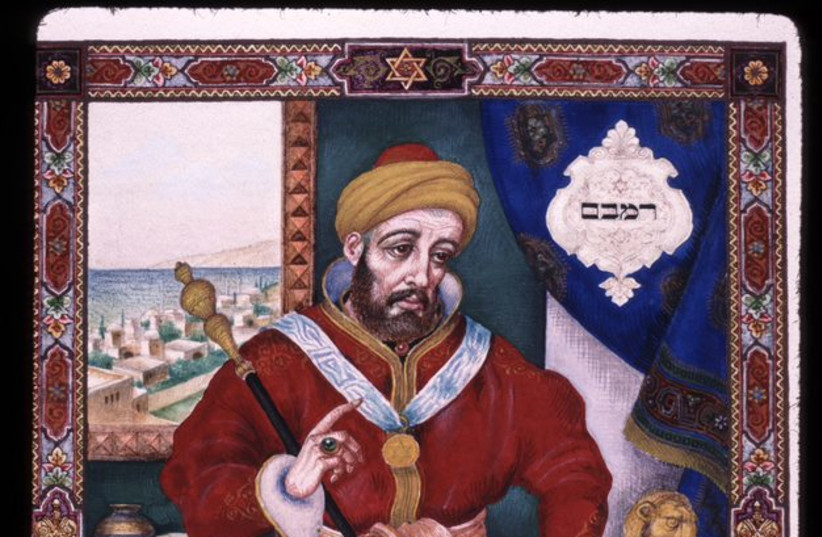Manuscripts handwritten by Moshe Maimonides are on display at the Yeshiva University Museum (YUM) in New York, in a free-to-attend exhibit that opened in May and will remain open until December 31, 2023.
The manuscripts, which include a fragment of the Cairo Genizah signed by Maimonides and his commentary on the Mishnah, make up The Golden Path: Maimonides Across Eight Centuries. Maimonides’ original sketch of the Temple Menorah will also be on display.
The text explored Maimonides’ authority in the Mediterranean and Islamic contexts in which he lived.
Many of the scripts have been borrowed from the Bodleian Libraries in Oxford, the British Library, the National Library of Israel, the Jewish Theological Seminary, the Royal Library in Copenhagen, the Italian State Archives, and others.
“This exhibit reflects Maimonides’s influence as well as his core values which also form the worldview and aspirations of Yeshiva University,” said Rabbi Dr. Ari Berman, President of Yeshiva University.

“The basis for our educational enterprise is epitomized by Maimonides’s religious leadership and intellectual quest for truth. Yeshiva University is honored to introduce the journey of Maimonides’s works to the broader community who through this exhibit can better develop their knowledge of Maimonides, Jewish history and the values on which to build their lives.”
Who was Maimonides?
Maimonides, who was also known as Moses ben Maimon or the Rambam, was a 12th-century philosopher, rabbinic scholar and communal leader.
Maimonides was born in 1138 in, what was at the time, Islamic-ruled Spain. Jews and Christians of the region were regularly exposed to brutality and forced to convert to Islam.
Maimonides moved to Morocco in 1160, according to Chabad.org, where sources say that his family hid their Jewish identity and publicly identified as Islamic.
At 42 years old, Maimonides was appointed the chief rabbi of Egypt.
“There is not a single aspect of Jewish life and thought that is not shaped by Maimonides,” said Dr. Ronnie Perelis, the Chief Rabbi Dr. Isaac Abraham and Jelena (Rachel) Alcalay Associate Professor of Sephardic Studies at YU. “This exhibition’s strength is in its ability to bring to life the way Maimonides’s ideas illuminated Jewish life throughout the diaspora and for generations after his death.”
“Arguably, no other individual has had a more pervasive or enduring effect on Jewish religious life over the last millennium than Maimonides,” said Sclar. “This exhibition is intended to convey not only his importance but the ways in which people have shaped and been shaped by his impact.”
Other historical items on display
The exhibit is also the first time that the manuscript of Moreh Nevuchim, meaning Guide to the Perplexed, will be available for the public to see. The manuscript was completed in the year 1349 and has remained in private hands for 500 years.
Visitors will also have the opportunity to see an 11th-century door to the Torah Ark, which once stood in the Ben Ezra Synagogue in Cairo. Maimonides was known to have visited this synagogue and interacted with the door.
13th-century Yemenite manuscripts and books printed from the Ottoman empire for Christian audiences have also been lent to the exhibit from the Hartman Collection.
